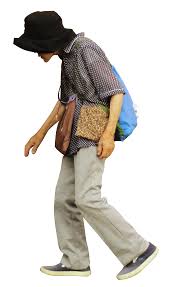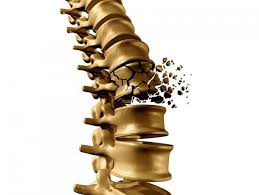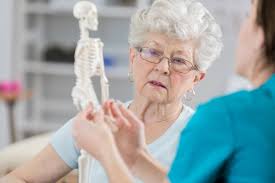Elderly Care Tips: Managing Chronic Conditions and Maintaining Independence
As people age, they enter a period of life known as their elderly years. Elderly individuals are generally classified as those over the age of 65. A person who is nearing or has surpassed the life expectancy of the human life cycle. As a group, they face unique physical and mental health challenges that tend to worsen with time. While physical health is often an issue, mental health is just as important in ensuring a high quality of life for the elderly. Mental health issues like depression and anxiety can have serious long-term effects on an individual’s wellbeing if left untreated. Additionally, many elderly individuals experience social isolation due to limited mobility or financial constraints, which can further aggravate mental health issues and reduce their enjoyment of life. Fortunately, there are numerous resources available to support healthy aging including community services, social activities, and technology-assisted programs that can help keep seniors connected with their communities. Please keep reading for details on the following topics:
Physical needs of the elderly
Emotional needs of the elderly
Physical characteristics of the elderly
Ways to maintain the physical well-being of the elderly
Common issues affecting the elderly
Osteoporosis
How to prevent falls at home
Anxiety
Sensory impairment
Dementia
Alzheimer’s disease

Elderly also known as:
- Old age
- Senior citizen
- Elder
- Geriatric
- Senescence
An elderly person usually falls with the age group:
60 -60- young old
70-79- middle old
80 and over- very old
Physical needs of the elderly encompass various aspects essential for maintaining their health and well-being. These needs typically include:
- Nutrition: Ensuring that elderly individuals receive adequate and balanced nutrition is crucial for maintaining overall health and vitality. This involves providing nutritious meals rich in vitamins, minerals, and protein to support their aging bodies.
- Hydration: Elderly individuals may be more prone to dehydration due to factors such as decreased thirst perception or certain medications. It’s essential to encourage them to drink an adequate amount of water throughout the day to prevent dehydration and support proper bodily functions.
- Shelter: Providing a safe and comfortable living environment is essential for the elderly. This includes ensuring appropriate housing arrangements that meet their mobility and accessibility needs and offer protection from environmental elements.
- Rest: Adequate rest and sleep are vital for elderly individuals to maintain their physical health and cognitive function. Encouraging regular sleep patterns and creating a conducive sleeping environment can help promote quality rest.
- Activity: Regular physical activity is beneficial for the elderly to maintain muscle strength, flexibility, and overall mobility. Encouraging them to engage in appropriate exercises, such as walking, gentle stretching, or low-impact activities, can help support their physical well-being.
-
Assistance with daily tasks: Many elderly individuals may require assistance with activities of daily living (ADLs), such as bathing, dressing, grooming, and medication management. Providing support with these tasks ensures their hygiene, comfort, and overall health.
Emotional needs of the elderly
The emotional needs of the elderly are just as important as their physical needs and encompass various aspects essential for their psychological well-being. These needs typically include:
- Safety and security: Elderly individuals often require reassurance and a sense of safety in their living environment. Providing a safe and secure home environment, free from potential hazards, can help alleviate anxiety and promote emotional well-being.
- Companionship: Social connections and companionship play a significant role in the emotional health of the elderly. Spending quality time with family members, friends, or peers can provide companionship, reduce feelings of loneliness, and foster a sense of belonging.
- Connection with friends and family: Maintaining relationships with loved ones is essential for the emotional well-being of the elderly. Encouraging regular communication and visits with family members and friends can help combat feelings of isolation and loneliness.
- Independence: Preserving a sense of independence and autonomy is crucial for the emotional well-being of the elderly. Providing opportunities for them to make their own choices and participate in decision-making processes can help maintain their self-esteem and sense of purpose.
- Emotional support: Elderly individuals may experience various emotions, including sadness, grief, anxiety, or depression, as they navigate life changes and transitions. Offering emotional support, empathy, and validation of their feelings can help them cope with these emotions and feel understood and supported.
-
Meaningful activities: Engaging in meaningful activities that align with their interests and preferences can promote a sense of purpose and fulfillment for the elderly. Encouraging participation in hobbies, recreational activities, or volunteer work can provide a sense of joy and accomplishment.

Physical characteristics of the elderly
The physical characteristics of the elderly undergo changes as a result of aging. These changes can vary from person to person but often include the following:
- Stooping posture: Many elderly individuals develop a stooped or hunched posture due to changes in the spine, such as decreased bone density or vertebral compression fractures.
- Loss of height: With age, the spinal discs lose fluid and elasticity, causing the spine to compress and individuals to lose height over time.
- Respiratory changes: Elderly individuals may experience frequent coughing or increased mucus production, leading to respiratory symptoms such as coughing or wheezing.
- Oral health changes: Aging can affect oral health, leading to decreased saliva production, increased tooth decay, and difficulty swallowing.
- Changes in vision: The aging process can result in reduced visual acuity, including difficulty seeing objects up close (presbyopia) or changes in color perception.
- Age-related hearing loss (presbycusis) is common among the elderly and can result in difficulty hearing high-frequency sounds or conversations in noisy environments.
- Changes in mobility: Elderly individuals may experience a slower gait, reduced balance, and increased risk of falls due to changes in muscle strength, joint flexibility, and proprioception.
- Changes in hair and skin: Hair may become grayer, thinner, or balding, while skin may lose elasticity and become more prone to wrinkles, dryness, and bruising.
- Sensory changes: Aging can affect sensory perception, including taste, smell, and touch, leading to diminished sensory experiences.
-
Chronic health conditions: Elderly individuals are more likely to experience chronic health conditions such as arthritis, osteoporosis, hypertension, diabetes, and cardiovascular disease, which can impact physical functioning and quality of life.

Ways to maintain the physical well-being of the elderly
Maintaining the physical well-being of the elderly is essential for promoting overall health and quality of life. Here are some ways to achieve this:
- Encourage participation in activities tailored to their abilities and preferences, such as walking, swimming, tai chi, or gentle stretching exercises. Regular physical activity helps improve strength, flexibility, balance, and cardiovascular health.
- Ensure a balanced diet rich in fruits, vegetables, whole grains, lean proteins, and healthy fats. Adequate nutrition supports overall health, energy levels, and immune function. Consider consulting a nutritionist for personalized dietary recommendations.
- Encourage elderly individuals to drink an adequate amount of water throughout the day to prevent dehydration, maintain proper hydration levels, and support bodily functions.
- Promote good sleep hygiene by establishing a regular sleep schedule, creating a comfortable sleeping environment, and practicing relaxation techniques before bedtime. Sufficient rest is essential for physical recovery, cognitive function, and overall well-being.
- Schedule regular check-ups with healthcare providers for screenings, vaccinations, and management of chronic conditions. Early detection and treatment of health issues can prevent complications and maintain optimal health.
- Ensure proper adherence to medication regimens by organizing medications, setting reminders, and monitoring for potential side effects or interactions. Consult healthcare professionals for guidance on medication management.
- Fall prevention: Create a safe living environment by removing hazards, installing grab bars and handrails, improving lighting, and using assistive devices such as canes or walkers. Regular exercise to improve strength and balance can also help reduce the risk of falls.
- Engage in activities that promote cognitive function and mental stimulation, such as reading, puzzles, games, socializing, and lifelong learning. Mental stimulation helps maintain cognitive abilities and may reduce the risk of cognitive decline.
- Encourage participation in social activities, clubs, volunteering, or religious organizations to foster social connections, reduce loneliness, and promote emotional well-being.
-
Schedule screenings for vision, hearing, bone density, blood pressure, cholesterol levels, and other relevant health parameters to monitor for potential health issues and intervene early if necessary.
Common issues affecting the elderly

Several common issues affect the elderly population as they age. These issues can impact their physical health, mental well-being, and overall quality of life. Some of the most prevalent common issues include:
- Osteoporosis: A condition characterized by decreased bone density and increased risk of fractures, particularly in the hips, spine, and wrists.
- Depression: Elderly individuals may experience depression due to factors such as loss of loved ones, chronic health conditions, social isolation, or changes in life circumstances.
- Dementia: A group of cognitive disorders characterized by progressive decline in memory, thinking, and reasoning skills. Alzheimer’s disease is the most common form of dementia.
- Chronic pain: Conditions such as arthritis, back pain, or neuropathy can cause chronic pain in elderly individuals, impacting their mobility and quality of life.
- Arthritis: A common condition characterized by inflammation of the joints, leading to pain, stiffness, and decreased range of motion.
- Falls: Elderly individuals are at increased risk of falls due to factors such as decreased balance, muscle weakness, vision impairment, and environmental hazards.
- Sensory impairment: Age-related changes in vision, hearing, taste, smell, and touch can affect sensory perception and quality of life.
- Cardiovascular disease: Conditions such as hypertension, coronary artery disease, and heart failure are common among the elderly and can increase the risk of heart attacks, strokes, and other cardiovascular events.
- Diabetes: Type 2 diabetes is more common in the elderly population and can lead to complications such as neuropathy, vision loss, kidney disease, and cardiovascular problems.
- Respiratory conditions: Chronic obstructive pulmonary disease (COPD), asthma, and pneumonia are common respiratory conditions that can affect elderly individuals’ breathing and quality of life.
- Incontinence: Loss of bladder or bowel control is common among the elderly and can be caused by factors such as muscle weakness, nerve damage, or underlying medical conditions.
-
Malnutrition: Poor nutrition can contribute to various health issues in the elderly, including weight loss, weakness, fatigue, and impaired immune function.
-
Anxiety disorders can manifest in various forms among the elderly, including generalized anxiety disorder (GAD), phobias, panic disorder, and social anxiety disorder. Elderly individuals may experience anxiety due to various factors such as health concerns, changes in living arrangements, financial worries, or fear of social isolation. Symptoms of anxiety can include excessive worry, restlessness, irritability, difficulty concentrating, muscle tension, and sleep disturbances. Managing anxiety in the elderly may involve a combination of therapy, medication, relaxation techniques, and lifestyle modifications.
-
Alzheimer’s Disease is a progressive neurodegenerative disorder that primarily affects memory, thinking skills, and behavior. It is the most common cause of dementia among older adults. Alzheimer’s disease typically progresses slowly over several years, starting with mild memory loss and eventually leading to severe impairment in cognitive function and daily functioning. There is currently no cure for Alzheimer’s disease, but treatments such as medication, therapy, and lifestyle interventions c an help manage symptoms and improve quality of life for affected individuals and their caregivers.
How to prevent falls at home

Preventing falls at home is crucial for the safety and well-being of elderly individuals. Here are some strategies to help reduce the risk of falls:
- Remove hazards: Clear clutter, loose rugs, electrical cords, and other tripping hazards from walkways and pathways. Ensure that floors are kept clean and dry to prevent slipping.
- Improve lighting: Ensure that all areas of the home are well-lit, especially stairways, hallways, and entrances. Install bright, energy-efficient lighting and use night lights in bedrooms, bathrooms, and hallways to improve visibility at night.
- Install handrails and grab bars: Install handrails on both sides of stairways and grab bars in bathrooms near toilets, showers, and bathtubs. These provide support and stability for elderly individuals when navigating stairs or getting in and out of the shower or bathtub.
- Use non-slip mats: Place non-slip mats or rugs with rubber backing in bathrooms, kitchens, and other areas prone to moisture to prevent slipping. In the shower or bathtub, use a rubber mat to provide traction and reduce the risk of falls.
- Wear supportive footwear: Encourage elderly individuals to wear supportive, well-fitting shoes with non-slip soles both indoors and outdoors. Avoid walking in socks or slippers, which can increase the risk of slipping.
- Organize items within reach: Arrange commonly used items within easy reach to avoid the need for reaching or climbing. Store frequently used items on lower shelves and avoid placing heavy items on high shelves.
- Use assistive devices: Consider using assistive devices such as canes, walkers, or wheelchairs to provide stability and support for elderly individuals with mobility issues. Ensure that these devices are properly fitted and regularly maintained.
- Exercise regularly: Engage in regular exercise programs that focus on improving strength, balance, and flexibility. Activities such as walking, tai chi, yoga, and strength training can help reduce the risk of falls by improving muscle tone and coordination.
- Review medications: Review medications with a healthcare provider to identify any that may increase the risk of dizziness, lightheadedness, or falls. Adjustments to medication dosages or schedules may be necessary to minimize these risks.
-
Regular vision and hearing checks: Schedule regular vision and hearing checks to identify and address any sensory impairments that may increase the risk of falls. Corrective lenses, hearing aids, or other interventions can help improve sensory function and reduce fall risk.
Disclaimer: The information provided in this content is for general informational purposes only. It is not intended as medical or healthcare advice, diagnosis, or treatment. Always seek the advice of a qualified healthcare professional with any questions you may have regarding a medical condition or healthcare decisions.

